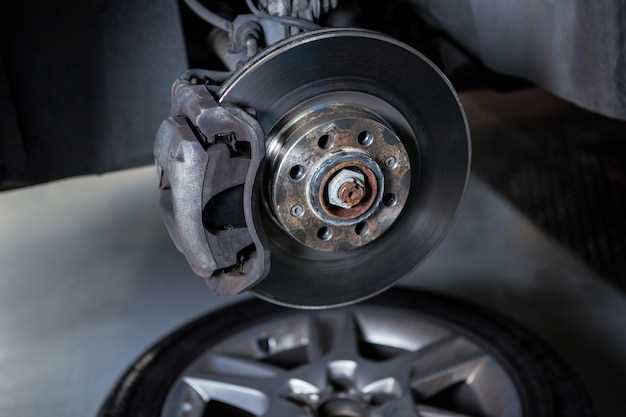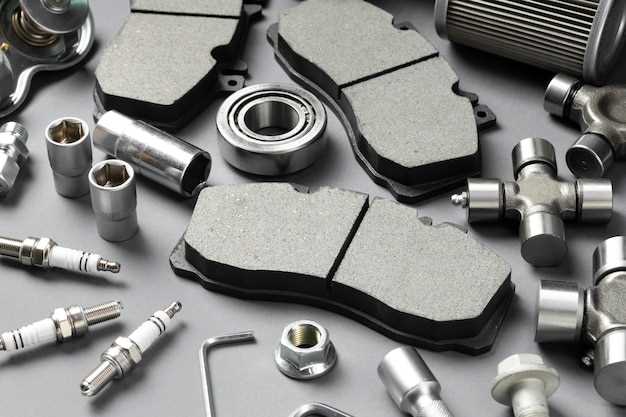
When it comes to vehicle safety, the braking system plays a crucial role, and two of its most essential components are brake pads and rotors. Understanding the differences between these two elements can significantly enhance your knowledge of how your vehicle stops and can help you make informed decisions regarding maintenance and repairs.
Brake pads are the components that create the necessary friction to slow down or stop your vehicle when you apply the brakes. Typically made from a combination of materials, including rubber, steel, and composite materials, brake pads wear down over time and may need to be replaced to ensure optimal performance. Their condition directly affects the efficiency of braking and overall safety.
On the other hand, rotors are the disc-shaped components that work in conjunction with the brake pads. When the brake pedal is pressed, the brake pads clamp down on the rotors, converting kinetic energy into heat energy and effectively slowing the vehicle. The material, thickness, and condition of the rotors are equally important since they influence the braking capability, durability, and performance of the entire system.
By recognizing the distinct roles that brake pads and rotors play, vehicle owners can better comprehend the intricacies of their braking system, ensuring safer travel on the roads.
Choosing the Right Brake Pads for Your Vehicle

When selecting brake pads for your vehicle, it’s essential to consider several factors to ensure optimal performance and safety. Brake pads play a crucial role in the braking system, working in tandem with rotors to slow down or stop your vehicle effectively.
Type of Brake Pads: There are primarily three types of brake pads: organic, semi-metallic, and ceramic. Organic pads are softer, providing quiet performance but may wear out faster. Semi-metallic pads have better heat transfer and are more durable, making them suitable for high-performance vehicles. Ceramic pads are known for their low dust production and quiet operation, but they might not provide the same level of stopping power in extreme conditions as semi-metallic options.
Vehicle Usage: Consider how you use your vehicle. For daily commuting, organic or ceramic pads may suffice, offering a balance of performance and comfort. If you drive in demanding conditions or engage in heavy towing, semi-metallic pads could offer the durability required to handle increased brake stress.
Compatibility with Rotors: Ensure the brake pads you choose are compatible with your vehicle’s rotors. Mismatched pads and rotors can lead to uneven wear, decreased performance, or even brake failure. Always check your vehicle’s specifications or consult a professional if unsure.
Noise and Dust Factors: Noise levels and dust production are crucial considerations. Some pads produce less dust and are quieter than others, which can be particularly important if you live in an urban area. Look for products designed for low dust and noise if these factors are a priority for you.
Brand Reputation: Choose pads from reputable manufacturers known for quality and reliability. Testing and research support the performance claims of top brands, which can provide peace of mind regarding your safety on the road.
By carefully evaluating these aspects–types of pads, usage, compatibility with rotors, noise and dust factors, and brand reputation–you can select the right brake pads that will ensure safety and performance for your vehicle.
Signs Your Brake Rotors Need Replacement
Identifying when your brake rotors require replacement is crucial for maintaining vehicle safety and performance. One of the first signs is vibration felt through the brake pedal when applying pressure. This sensation often indicates warped rotors that can lead to uneven braking.
Another indicator is a noticeable squeaking or grinding noise. If the brake pads wear down significantly, they may make contact with the rotor surface, leading to further damage. Pay attention to any unusual sounds when braking, as they suggest deterioration of the rotors.
Visual inspection can also help determine rotor condition. Look for deep grooves, scoring, or cracks on the surface. These imperfections can compromise braking efficiency and require immediate attention. Discoloration, such as blue or purple spots, may signify excessive heat, which weakens the rotor material.
Inconsistent braking performance is another warning sign. If your vehicle pulls to one side during braking, it could mean that one rotor is more worn than the other. This issue can not only affect braking but may also impact overall vehicle handling.
Finally, monitor your brake pad wear. If you frequently find yourself replacing brake pads, it might be due to underlying issues with your rotors. Consistent replacement could necessitate a thorough examination of both components to ensure safe driving.
Maintenance Tips for Prolonging Brake Component Lifespan

Proper maintenance of brake components, such as pads and rotors, is essential for ensuring safety and performance. Here are some effective tips to extend their lifespan:
1. Regular Inspections: Schedule routine inspections of your brake system to check the condition of pads and rotors. Look for signs of wear, cracks, or uneven surfaces.
2. Brake Fluid Maintenance: Change the brake fluid according to your vehicle manufacturer’s recommendations. Contaminated fluid can lead to increased corrosion of brake parts and reduced performance.
3. Avoid Excessive Braking: Practice smooth driving habits. Hard braking can generate excessive heat, which can cause premature wear on both pads and rotors.
4. Choose Quality Parts: Invest in high-quality brake pads and rotors. Premium components are often made from better materials, lasting longer and providing improved performance.
5. Proper Bedding-In: Follow the recommended bedding-in process for new brake pads and rotors. Proper bedding helps build an effective transfer layer, improving braking capabilities.
6. Keep it Clean: Ensure that brake components are free from debris and dust. Cleaning rotors and ensuring pads are debris-free can prevent excessive wear and maintain efficiency.
7. Monitor Driving Conditions: Be aware of how your driving environment affects your brakes. Frequent stop-and-go traffic or hilly terrains can lead to quicker degradation of pads and rotors.
By following these maintenance tips, you can significantly enhance the lifespan of your brake components, ensuring reliable performance and safety on the road.

